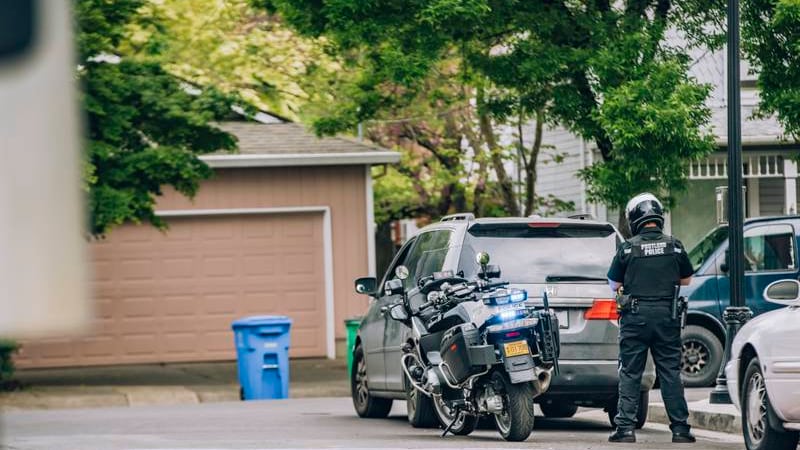The Portland Police Bureau received improved grades on last year’s annual report from the Oregon Criminal Justice Commission analyzing racial bias in traffic stops by law enforcement agencies across the state.
In prior years, the CJC found Black drivers were more likely to be arrested following a traffic stop by PPB officers. No longer.
But the bureau’s data continued to show statistically significant disparities in searches of Black drivers, according to the report.
The report, which analyzed stop data collected prior to July 2022, comes as city leaders have moved to address racial disparities in policing. In June 2021, Mayor Ted Wheeler and Police Chief Chuck Lovell announced the bureau was discontinuing low-level traffic stops to help address the issue.
Judging simply by the racial demographics of traffic stops, the bureau hasn’t improved. The city is 74% white. But in the second quarter of 2021, white people made up only 64% of traffic stops. And despite the city’s interventions, the disparity only got worse. By the third quarter of 2022, the most recent data available, it had fallen to 61%.
But the bureau has long argued that comparing stop demographics to citywide demographics is a mistake, due to the fact that “not all drivers are equally likely to be stopped by police,” according to a 2022 report from the PPB addressing the issue. It suggests using collision statistics as a benchmark, rather than census data, because it better represents drivers on the road. Around 65% of collisions involved a white driver in 2021.
The CJC uses a different method to detect bias that doesn’t rely on benchmarks. It used what it calls the gold standard in detecting racial bias, a “veil of farkness” analysis, which “is based on the basic assumption that officers can better detect a driver’s race during daylight hours as compared to darkness.”
To ensure a consistent sample of drivers, the CJC compared data at the same time of day: the “inter-twilight window” of dawn or dusk. Researchers then looked for differences in the racial demographics of stopped drivers in winter (when it is darker) and in summer (when it is lighter).
The Portland Police Bureau has passed that test every year since the CJC began producing these reports in 2019.
But the CJC has also examined disparities in stop outcomes—in other words, who gets searched, arrested or cited as a result. PPB hasn’t done as well on these tests, at least when it comes to Black drivers. But this year, it did a little better. Here’s how the bureau has fared over the past four years:
2019: Disparity in searches and arrests of Black drivers. Searches of Black people were less likely to produce contraband. CJC recommends PPB “receive technical assistance” to address the issues.
2020: Disparity in searches and arrests of Black drivers.
2021: Disparity in searches and arrests of Black drivers.
2022: Disparity in searches of Black drivers.
On the other hand, the Multnomah County Sheriff’s Office had no disparities at all for the second year in a row. “It is a testament to our deputies and a reflection of the values of our agency,” Sheriff Mike Reese said last month.
The Portland Police Bureau didn’t respond when asked for comment. Police Chief Chuck Lovell issued a statement last July acknowledging racial disparities in traffic stops. “PPB will continue to work with our equity and inclusion team on reviewing any additional recommendations,” he said.

